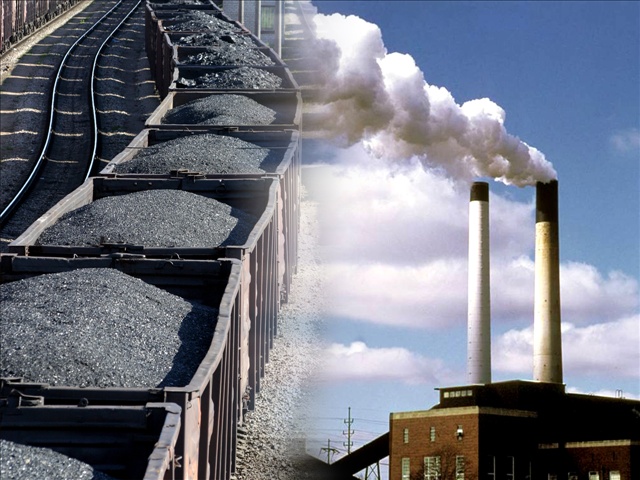Debunking green myths and embracing a practical future: Robert Bryce’s “Power Hungry”
04/02/2025 / By Ramon Tomey

- Robert Bryce critiques the unrealistic expectations surrounding wind and solar power in his book “Power Hungry: The Myths of ‘Green’ Energy and the Real Fuels of the Future.” He argues that they cannot alone meet global energy demands due to limitations in scale, intermittency and power density.
- Despite claims of obsolescence, coal remains highly efficient—exemplified by the Cardinal Mine in Kentucky that produces energy equivalent to 66,000 barrels of oil daily, rivaling total U.S. wind and solar output.
- Even with heavy wind energy investments, Denmark’s emissions haven’t declined; it relies on coal and imported hydropower during low-wind periods and exports excess wind power due to grid instability.
- The proposal by the late T. Boone Pickens to replace oil with wind and natural gas fails because gas plants can’t be easily ramped down for wind, and wind’s unpredictability increases gas dependency, raising costs without cutting oil imports.
- Bryce advocates for natural gas as a transitional fuel (lower emissions than coal) and nuclear power for reliable, zero-emission baseload energy, emphasizing practicality over idealism in energy policy.
Robert Bryce’s 2011 book “Power Hungry: The Myths of ‘Green’ Energy and the Real Fuels of the Future” challenges widely held beliefs about renewable energy and presents a sobering analysis of what truly powers modern society. Through firsthand accounts and hard data, Bryce dismantles the romanticized vision of a future dominated solely by wind and solar, arguing instead for a pragmatic approach centered on natural gas and nuclear power.
The book opens with a striking depiction of the Cardinal Mine in western Kentucky, where coal miner Pete Hagan extracts massive quantities of coal with remarkable efficiency. In just 45 seconds, his machine mines a dozen tons – a testament to coal’s enduring role as a cornerstone of affordable energy.
Despite claims that coal is obsolete, Bryce reveals that this single mine produces the raw energy equivalent of 66,000 barrels of oil per day. Its output nearly matches that of all U.S. wind and solar installations daily. This stark comparison underscores the immense scale of energy demand and the limitations of renewables in meeting it.
Denmark, often lauded as a renewable energy leader, serves as another case study. Despite heavy investments in wind power, the country’s carbon emissions have remained stagnant for decades.
The intermittency of wind forces Denmark to rely on coal and imported hydropower when the wind isn’t blowing. Worse, much of its wind-generated electricity is exported because domestic demand cannot absorb the erratic supply. This reality contradicts the popular narrative that wind power alone can decarbonize economies.
Bryce also critiques the Pickens Plan, a high-profile proposal by the late Texas oil magnate T. Boone Pickens to replace foreign oil dependence with wind energy and natural gas. The plan’s fatal flaw lies in its assumptions.
Utilities cannot simply shut down gas plants when wind is available, and the U.S. lacks enough natural-gas-fueled vehicles to significantly reduce oil imports. Ironically, wind power increases reliance on natural gas, as gas-fired plants must compensate for wind’s unpredictability. This drives up infrastructure costs and consumer electricity prices.
The solution, Bryce argues, lies in embracing what he calls N2N—natural gas to nuclear. Natural gas offers high power density, affordability and lower emissions than coal, making it an ideal transitional fuel. Nuclear power, despite public skepticism, remains the only large-scale, zero-emission energy source capable of providing reliable baseload power. Bryce dispels fears around nuclear safety, highlighting its strong environmental record and indispensability in a low-carbon future.
While Bryce does not advocate abandoning renewables entirely, he stresses the need for realism. Energy transitions are slow and governed by four imperatives: Power density, energy density, cost and scale. Wind and solar fail to meet these criteria at the level required to sustain modern economies. Instead of clinging to idealistic visions, Bryce calls for a no-regrets energy policy that prioritizes practical, scalable solutions like natural gas and nuclear.
The central message of “Power Hungry” is clear: The path to a sustainable energy future lies not in wishful thinking but in confronting the hard truths about what actually works. By moving beyond hype and focusing on proven technologies, society can achieve energy security, economic stability and meaningful emissions reductions. The choice is not between fossil fuels and renewables, but between illusion and reality.
Watch this video about Robert Bryce’s book “Power Hungry: The Myths of ‘Green’ Energy and the Real Fuels of the Future.”
This video is from the BrightLearn channel on Brighteon.com.
Sources include:
Submit a correction >>
Tagged Under:
This article may contain statements that reflect the opinion of the author




















